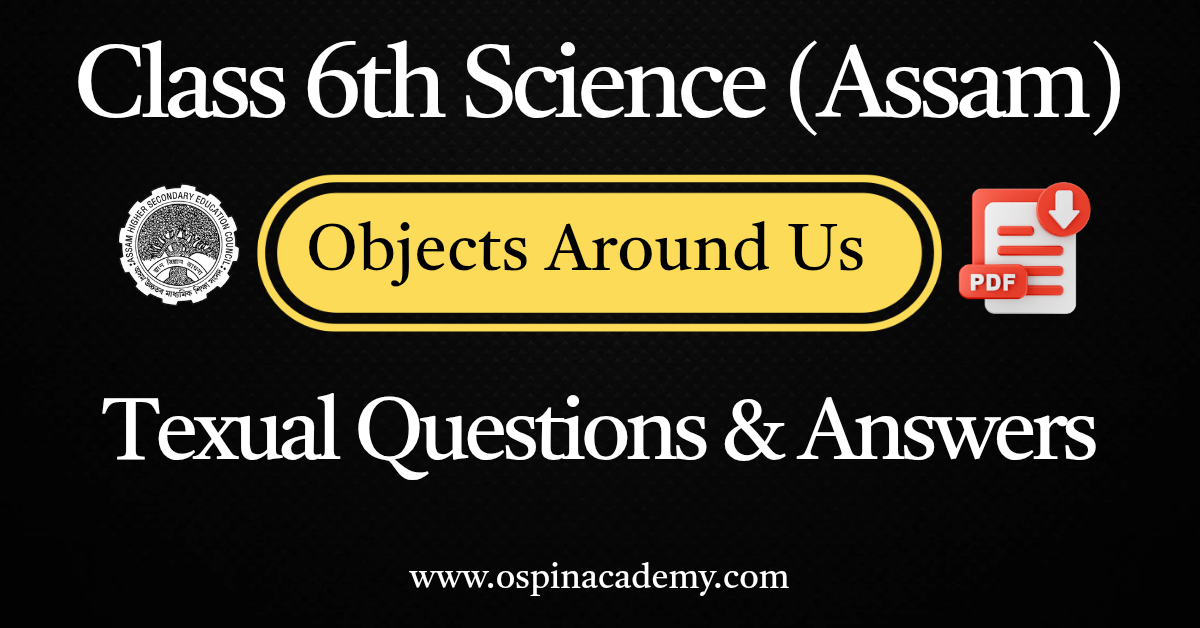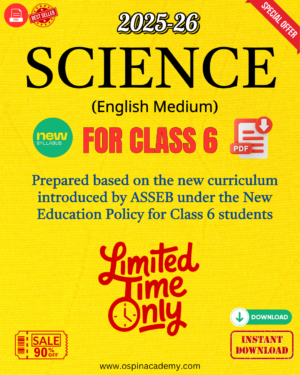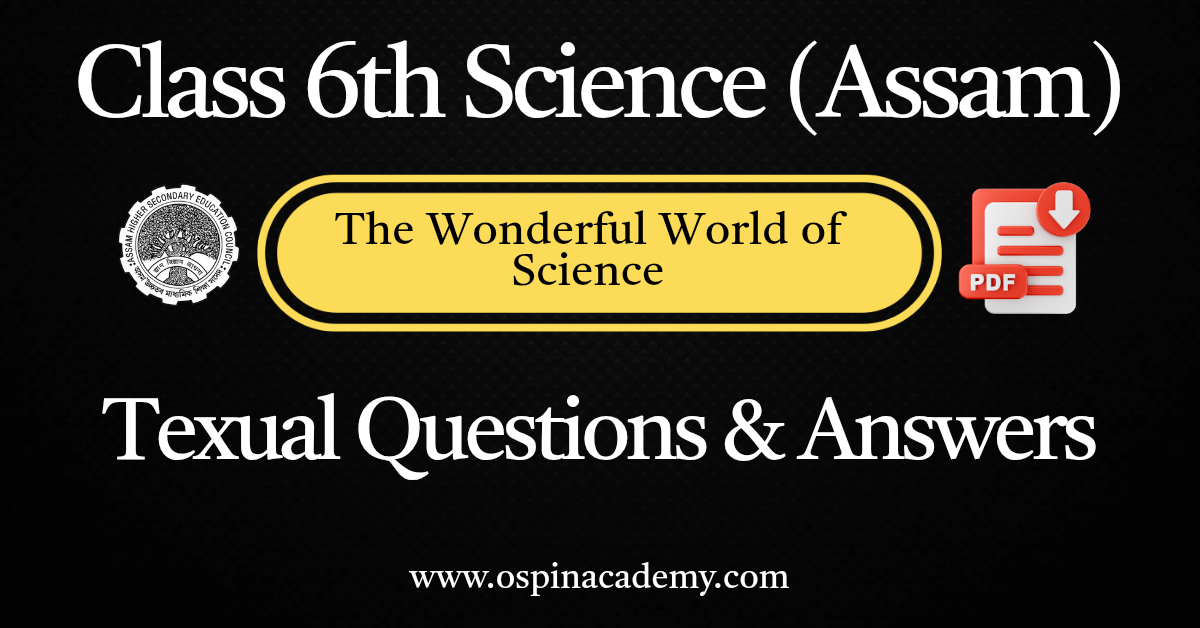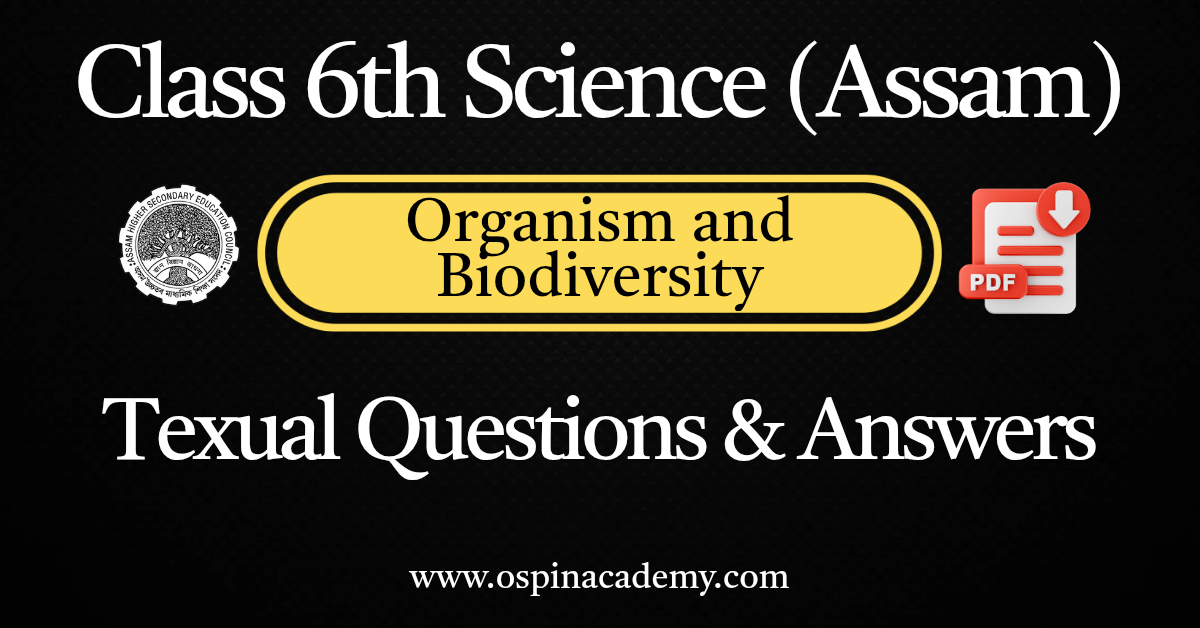Explore the everyday world of materials with Class 6 *Amar Bigyan* Chapter 5 – Objects Around Us, crafted as per the new SCERT Assam syllabus 2025-26 for English Medium students. This chapter introduces students to the properties of objects, their classification, and how they interact with their environment. Aligned with the updated Assam board curriculum, it encourages young learners to observe and analyze the objects they encounter daily, fostering curiosity and scientific thinking.
The new syllabus 2025-26 emphasizes hands-on learning and practical understanding, making this chapter an engaging exploration of the physical world. Students will learn about the characteristics of objects, such as shape, size, texture, and material properties, as well as how to classify them based on these traits. The chapter also covers concepts like states of matter and their applications in daily life. Scan the QR code W7T3E6 to access interactive resources and deepen your understanding of objects as per the SCERT Assam English Medium curriculum.
✅ What You’ll Learn in Chapter 5:
- Properties of objects and their classification in the new SCERT Assam syllabus
- Characteristics like shape, size, texture, and material composition
- Introduction to states of matter: solid, liquid, and gas
- Differences between natural and man-made objects
- How objects interact with their environment (e.g., floating, sinking)
- Practical applications of material properties in everyday life
- Simple experiments to observe and analyze object properties
- Inquiry-based activities to develop scientific observation skills, as per the 2025-26 curriculum
- Relevance of objects and materials in Assam’s local context
🎯 Why Choose Ospin Academy for Class 6 Amar Bigyan?
- 100% aligned with the SCERT Assam English Medium new syllabus 2025-26
- Clear, concise explanations, accurate Q&A, and exam-ready notes
- Ideal for Assam board students preparing for the updated curriculum
- Engaging video lessons available on Ospin Academy’s YouTube channel
- Downloadable resources, including chapter notes, MCQs, and QR code W7T3E6 content
- Focus on conceptual clarity and practical applications as per new syllabus guidelines
With the new SCERT Assam syllabus 2025-26, learning about objects around us is both educational and exciting! Ospin Academy’s resources make Chapter 5 – Objects Around Us engaging, accessible, and easy to master. Use the QR code W7T3E6 to unlock additional study materials and join Ospin Academy to excel in the updated Class 6 Amar Bigyan curriculum while discovering the science behind everyday objects!
SCERT Assam Class 6 Science (Amar Bijnan) – English Medium Chapter-wise Solutions PDF
Special Combo Offer!
(For SCERT Assam Class 6, 2025)
Get complete chapter-wise Science (Amar Bijnan) solutions in English Medium prepared by expert teachers.
Covers all textbook exercises, key concepts, definitions, and diagrams as per the latest SCERT Assam syllabus.
Ideal for concept clarity, homework assistance, and exam preparation.
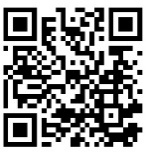
Class 6th Science
OBJECTS AROUND US
Exercise
Q.1. Darken the circle of the correct answer:
1. The space occupied by material is called-
(a) Matter
(b) Mass
(c) Volume
(d) Area
Answer:(c)
(ii) Which of the following is transparent?
(a) Wood
(b) Glass
(c) Iron
(d) Paper
Answer:(b)
(iii) Which of the following is translucent?
(a) Tumbler
(b) Mirror
(c) Oiled paper
(d) Steel glass
Answer:(c)
(iv) Find out the odd one from following?
(a) Gold
(b) ) Aluminium
(c) Copper
(d) Bamboo
Answer:(d)
Q.2. Which of the following objects are soluble in water and which are insoluble in water.
(a) Sugar
(b) Coconut oil
(c) Sand
(d) Honey
(e) Chalk powder
(f) Rice powder
(g) Salt
Answer:
|
Objects soluble in water |
Object insoluble in water |
|
(a) Sugar (d) Honey (f) Salt |
(b) Coconut oil (c) Sand (e) Chalk powder (f) Rice powder |
Q.3. What is matter? Explain with example
Answer: Anything that occupies space and has mass is called matter or which has mass and volume is matter.For Example a ball, made of iron has mass and it occupies definit space. The mass of the ball is the amount of iron in it any volume of the ball is the space occupied by the ball.
Q.4. From which two properties can we say that stone is a matter?
Answer: Stone is a matter because it has mass and volume,
Q.5. Write the name of four materials by which we can makea tumbler.
Answer: The four materials by which we can make a tumbler are-
(i) glass
(ii) Plastic
(iii) Paper
(iv) metal
Q.6. What is lustre?
Answer: The gentle shining property of matter is called lustre.
Q.7. Write whether the following sentences are correct or in correct?(a) Wood is trnsparent, but glass is opaque.
Answer: incorrect
(b) Sawdust is soluble in water.
Answer: Incorrect.
(c) Salt is soluble in water
Answer: Correct.
(d) A piece of wood floats in water
Answer: Correct.
(e) Coconut oil is soluble in water.
Answer: incorrect.
(f) Glycerine is soluble in water.
Answer: Correct.
(g) Copper and iron are lustraus material
Answer: Correct.
(h) Air is transparent
Answer: Correct.
Q.8. Match the materials with the objects from which the object is made up of –
|
Object |
Material |
|
Notebook Nail Chair Tumbler Thread |
Cotton Wood Glass paper Iron |
Answer:
|
Object |
Material |
|
Notebook Nail Chair Tumbler Thread |
paper Iron Wood Glass Cotton |
Q.9. Name five objects that are madeup of plastic.
Answer: The five objects that are made up of plastics are-Chair, bucket, mug, bottle, tumbler.
Q.10. Fill in the blanks –
(i) The same object can be made of different_____
Answer: material
(ii) The method of arranging of objects in to groups is called_______
Answer: Classification
(iii) The amount of mater present in an object is the________.of the object.
Answer: Mass
(iv) The space occupied by an object is _________
Answer: Volume
Q. 11. Match the following according to their properties. Some objects or materials may have multiple properties.
Answer:
|
Objects |
Property |
|
(i) Steel plate (ii) Glass bottle (iii) Wooden block (iv) Salt |
Lustrous Transparent Opaque Soluble in water |
Q.12. If you are asked to design a new type of desk for your school, which is strong, light weight and durable. Which material would you select and what properties would you prioritize to ensure the desk meets these needs.
Answer: If I am asked to design a new type of desk for my school, I would like to prefer plastic material for new type of desk. Because plastic is a hard light weight and durable material. I think it will last many years.
Q.13. Collect the different substances like sand, salt, lemon juice, shampoo, mix one by one in a glass of water and observe which material in soluble and which is not. Record your observation in a tumbler form. Answer:
|
Materials |
Soluble in water/insoluble |
|
(i) Sand |
Insoluble |
|
(ii) Salt |
Soluble |
|
(iii) Lemon juice |
Soluble |
|
(iv) Suger |
Soluble |
|
(v) Mustard oil |
Insoluble |
Q.14. Students will draw the taxuad digarm given in the books.
Answer: Self Task
Class 6 Amar Bigyan Chapter 5 – Objects Around Us FAQs
Get Free NCERT PDFs
If you want to download free PDFs of any chapter, click the link below and join our WhatsApp group:
